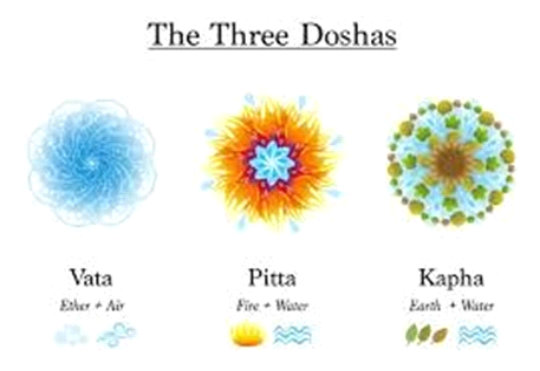If you have a tendency to suffer from inflammation issues, be it skin redness, heartburn, bleeding gums or joint pain you may notice how these worsen as summer approaches. That is because we are heating up, along with the world around us.
In the winter our blood supply needs to keep the organs the warm and nourished, but as the days become warmer, so do we and our blood can rise nearer to the surface.
When we look at ancient teachings so much is common sense. Ayurveda, the Indian teachings on health and longevity, which have been a key part of my yogic journey, sees us as part of the natural world not separate from it.
Also described as the art of conscious living, Ayurveda is to eating what yoga is to movement. Both foster awareness of how the choices we make affect our overall physical mental and spiritual health.
Against this background Mark and I have embraced the permaculture movement which, while starting from the perspective of how we care for the earth that feeds us, recognises that this is just one of many behaviours that shape us as individuals and societies.
Making food choices
I love the Ayurvedic system because it sees us all as individuals and makes personalised recommendations as to what to eat when, starting of course with the importance of eating fresh foods in season.
When we make food choices we are deciding what nourishment we will absorb from the world around us. Ayurveda helps us understand how we do this by explaining how the elements that comprise the earth are found in our minds and bodies. And these same elements are found in the food we eat.
Water
Earth
Fire
Air
Space

These elements manifest in different flavours
The Sour flavour is made up of Earth and Fire so can be generally heating, light and liquid. In small amounts it stimulates digestion and helps the liver control the flow of blood, but in large amounts it can over excite the liver and contribute to skin problems or over acidity. Sour is another one to watch during hot summer days.
Salty foods are made up of Water and Fire and have an affinity with the Kidneys which are both the battery pack of the body and help maintain its water balance. They are considered heating, heavy and oily so are great to nourish the body in early winter, but should be reduced as spring approaches
Astringent foods are made up of Air and Earth, this flavour is cooling, drying and heavy. It is active in the Colon. So again, small amounts do an important job, large amounts are too drying so will lead to gas and constipation, especially in the autumn when everything is contracting.
The Bitter flavour is made up of the elements of Space and Air which are generally cooling, light and dry. They scrape toxins from the body so benefit all the organs. New research shows that bitters are cardio-protective, regulating the strength and intensity of the heartbeat. We don’t have many bitter flavours in the West which is why medicines are bitter! Bitter greens are a better option and should be especially enjoyed in the heat of summer, but always tempered with some other flavours so their action is not too strong.
Pungent foods are generally heating, dry, and light, not surprising as they are made up of Fire and Air. They help clear excess mucous from the lungs but should not be taken in excess, especially if the weather is hot or dry, as the body is a naturally moist environment and needs to stay that way.
When we eat a diet made up of all the flavours both body and mind are satisfied. The western diet is primarily sweet, with some sour and salty flavours. This can lead to a constant feeling of never being satisfied. In the West we tend to meet the need for bitter and astringent flavours with tea and coffee which are in turn stimulants and can lead to more cravings.
Eating for your Mind/Body type
Now it is time to look at how the the elements play out in your body and whether any imbalance is contributing to health issues. To do that we have to consider the Ayurvedic concept of the Doshas, or the physiological and psychological forces at play in each one of us. Fortunately there are only three, not five:
KAPHA is a combination of Earth and Water
PITTA is Fire (and a small amount of Water to stop us burning up)
VATA is Air and Space
And we all have all three: Kapha is the structure of the body; Pitta represents the metabolism and Vata is the principle of movement. But we are usually born with one
or more dominant Dosha which will affect our physical appearance and psychological tendencies.

These elements manifest in different flavours
Good health, from an Ayurvedic perspective, is about keeping our Doshas in balance, in the same proportions are were when we were born.
Unfortunately, the stresses of life, dietary choices, and sometimes factors outside of our control, often lead to imbalances in Doshas. These in turn lead to ‘dis-ease’ where the body is not as comfortable as it might be.
Examples of some indications of a Dosha being out of balance include:
· Kapha: sinus problems, excess mucous, water retention, not able to wake up in the morning
KAPHA is increased by sweet, salty and excess sour flavours
· Pitta: Heartburn, GERD, frequent headaches, eczema and rashes, rheumatoid arthritis, anger issues
PITTA is aggravated by salty, sour and pungent flavours
· Vata: Gas, bloating, constipation, dry skin, cracking joints, osteoarthritis, trouble sleeping, anxiety.
VATA is aggravated by bitter, astringent and excess pungent flavour.
This is a big subject, and if you are really keen to understand your Dosha make up and how any imbalances are affecting you, then I recommend booking a Wellness consultation.
But for the purpose of the recipes on the Yoga and Spice web page, the footnotes are to help you understand which Dosha could be aggravated, or helped, by each dish. Of course, if you are fit and healthy with a strong digestion then you can enjoy them all. But if, as you have been reading, you have identified with some of the health issues mentioned above, or have any chronic conditions, it may be that some recipes will suit you better than others. Or you may have to avoid certain foods in different seasons.
Listen to your body – it will tell you.
